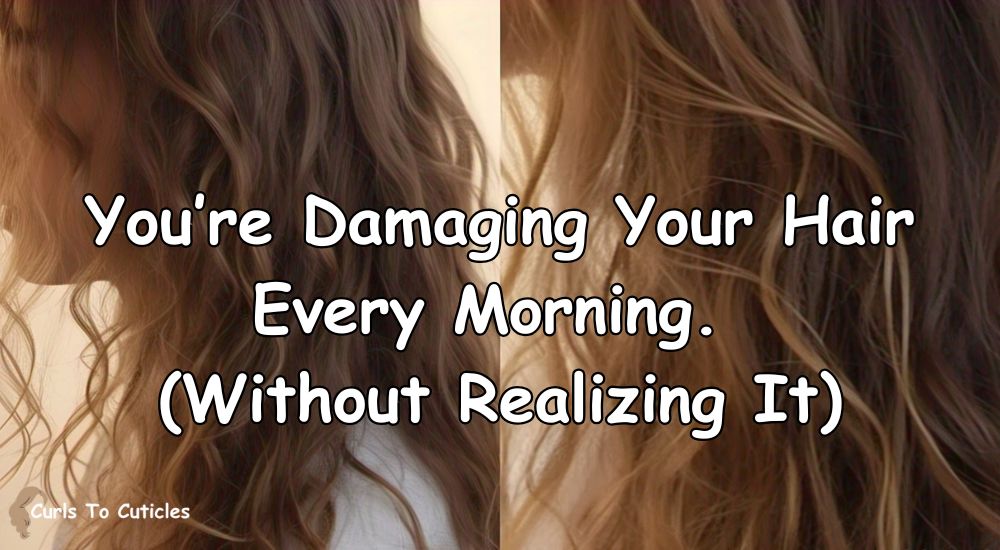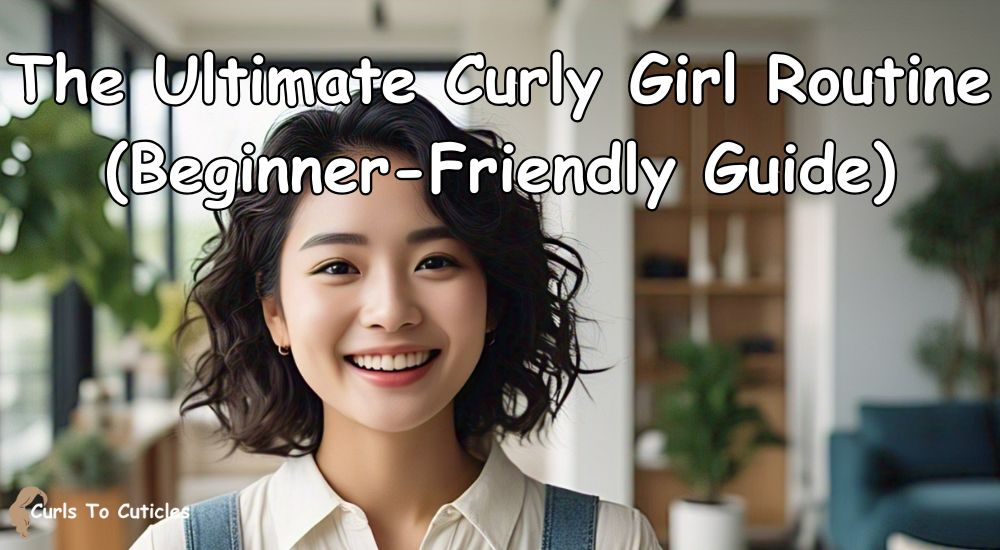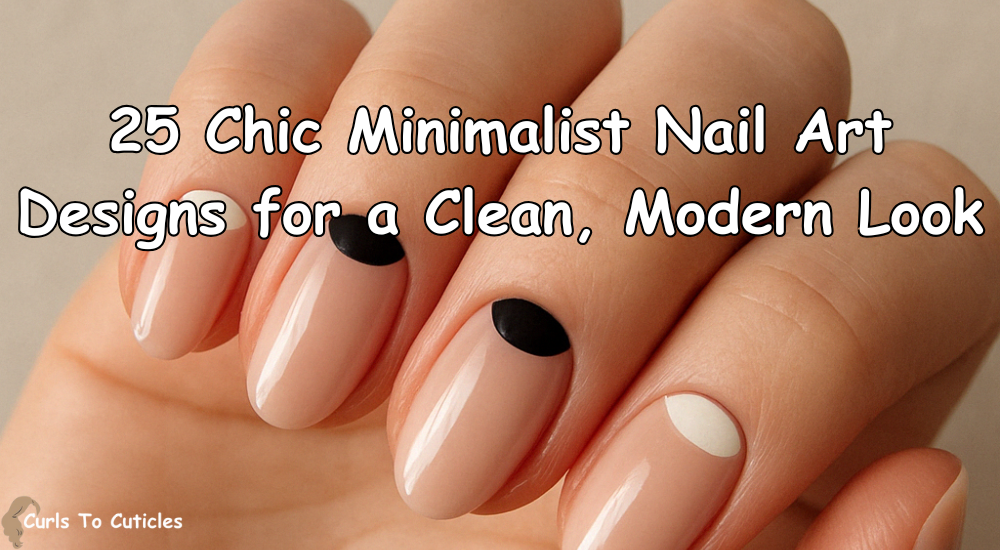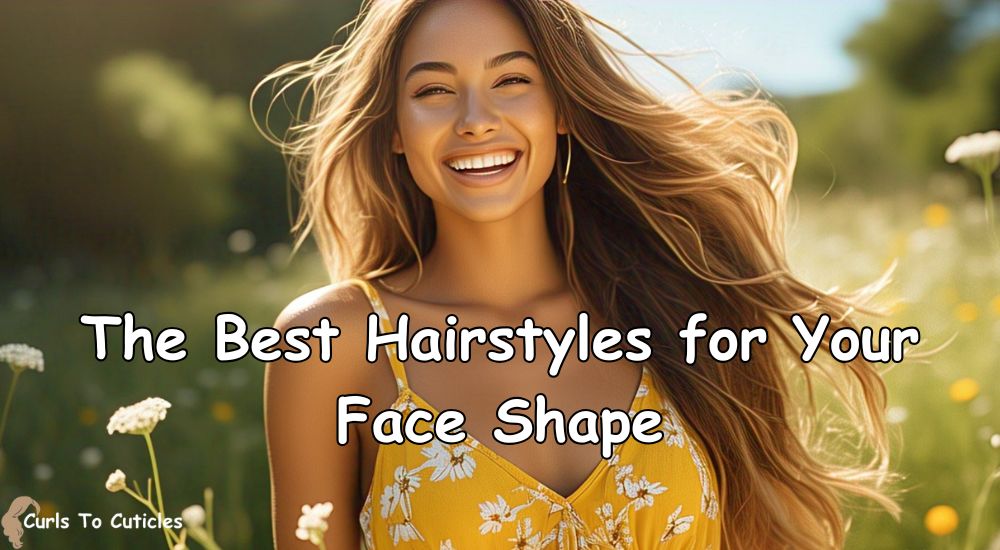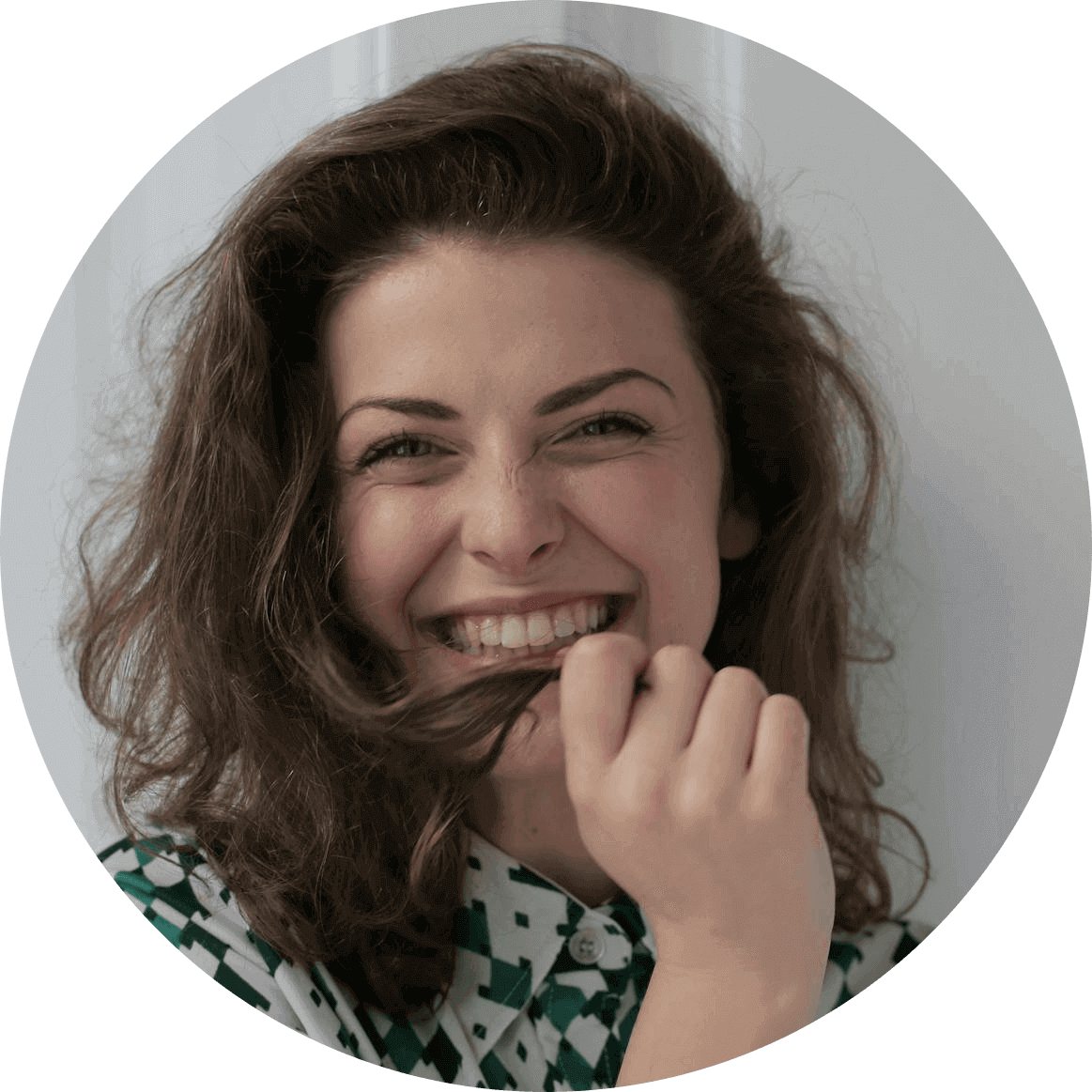Now Reading: Top Hair Care Trends for 2025 – What’s In & What’s Out
-
01
Top Hair Care Trends for 2025 – What’s In & What’s Out
Top Hair Care Trends for 2025 – What’s In & What’s Out
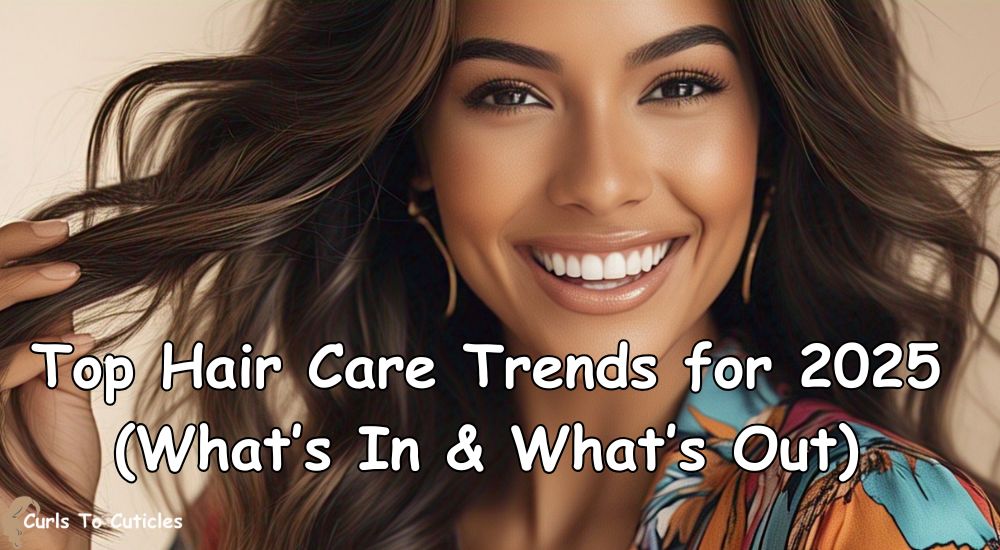
Hair care continues to evolve with changing lifestyles, technologies, and preferences. In 2025, people want results without spending hours on complex routines. I created this guide to show you what’s trending and what’s no longer working.
I will break down the top “ins” and “outs” in hair care. The information is easy to follow. The tips are simple to apply. Whether you want to change your routine or upgrade your products, this list will help you stay current.
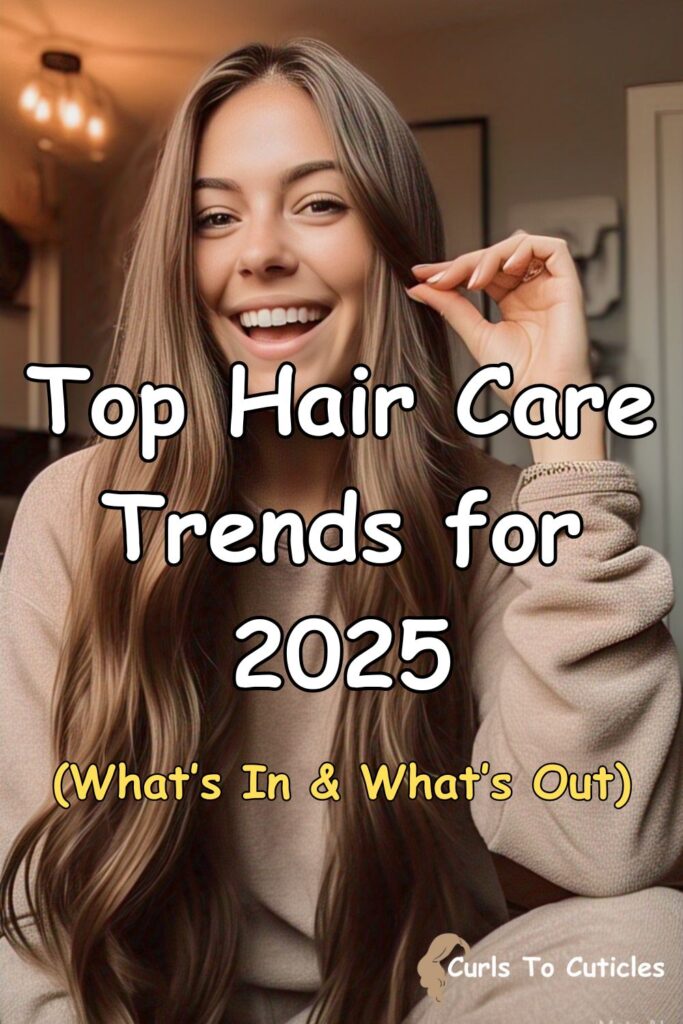
What’s In – Hair Care Trends for 2025
1. Scalp Health Comes First
The scalp is the foundation of healthy hair, yet for years it was overlooked. In 2025, scalp care is front and center in every smart routine. Just like skincare, people are learning that the condition of the “base” determines the result. A dry, oily, or inflamed scalp can lead to everything from dandruff and breakage to slow hair growth and thinning.
If your scalp is not balanced, even the best hair products won’t work as they should. Think of it like planting a flower—if the soil is poor, the plant struggles. The same goes for your hair.
Popular products that promote scalp wellness include:
- Scalp scrubs: These help remove product buildup, excess oil, and dead skin cells. You only need to use them once a week or as needed.
- Scalp serums: Lightweight, often oil-free formulas that deliver hydration, soothe inflammation, and sometimes include ingredients to boost circulation and promote growth.
- Leave-in exfoliants: These are gentle formulas that exfoliate chemically using ingredients like salicylic acid, lactic acid, or tea tree to clear the scalp over time without scrubbing.
- Scalp massagers: These handheld tools stimulate blood flow to the hair follicles, which may encourage growth and boost product absorption.
What I do:
I make scalp care a regular part of my weekly routine. Twice a week, I use a soft silicone scalp brush while I shampoo to gently loosen debris and stimulate circulation. After washing, I apply a lightweight serum with tea tree and peppermint oil. It feels cooling, reduces itchiness, and keeps my scalp fresh and balanced.
By making small changes like this, I’ve noticed less dryness, better hair growth, and fewer flakes—even during dry or cold weather.
2. Microbiome-Friendly Products
One of the biggest breakthroughs in hair care is the focus on the scalp microbiome—the ecosystem of bacteria and fungi that lives on your skin. Like the gut, your scalp needs a healthy balance of good bacteria to function properly. When the microbiome is disrupted, it can lead to itching, flaking, excess oil, and even hair loss.
That’s why microbiome-friendly products are trending in 2025. These formulas don’t just clean the scalp—they nurture it. They’re designed to be gentle, supportive, and restorative.
Key features to look for in microbiome-friendly hair care:
- No sulfates: Sulfates are strong detergents that strip away natural oils, disrupting the protective barrier of the scalp.
- No parabens: These preservatives can sometimes irritate the scalp or impact the microbiome over time.
- pH-balanced: The scalp’s natural pH is slightly acidic (around 4.5–5.5). Products with the right pH support the skin’s barrier and reduce irritation.
- Contains prebiotics or probiotics: Prebiotics feed the good bacteria, while probiotics help replenish them. Some advanced products even include postbiotics—byproducts that strengthen the scalp’s defenses.
Why it matters:
When your scalp’s microbiome is balanced, your whole hair ecosystem improves. You’ll notice:
- Less itching or redness
- Better oil control
- Reduced flaking
- Stronger, shinier hair over time
Microbiome-focused care is especially helpful for people with sensitive scalps, chronic dandruff, or those who wash frequently due to sweat, workouts, or pollution.
3. Minimalist Hair Care
The hair care world used to be about collecting products—one for shine, one for frizz, one for curl definition, one for heat protection, and on and on. But in 2025, people are clearing the clutter and choosing minimalist hair care routines that are easier, faster, and just as effective.
This trend is all about streamlining. Instead of layering five products every day, people are learning to find multi-use formulas that meet several needs in one. You save time, reduce buildup, and spend less money overall.
This trend values:
- Fewer ingredients: Fewer chemicals means less chance of irritation or interaction. Clean labels are easier to understand.
- Simple steps: Most routines can be boiled down to three categories—cleanse, condition, and protect/style.
- Less time in the bathroom: With smart product choices, styling takes minutes, not hours.
What I suggest:
Start by looking at what you use now. Are there overlapping products? For example, do you really need a separate detangler, leave-in conditioner, and heat protectant? There are many leave-ins that do all three.
My tip:
I personally use a multi-tasking leave-in spray that detangles my hair, protects it from heat, and adds moisture without weighing it down. It saves me time every morning, and my hair feels softer with just one step. You’d be surprised how many “specialty” products are just slight variations of one another.
Minimalism in hair care also means fewer wash days, smarter tools, and focusing on quality over quantity. If your shelf is full of half-used bottles, it might be time for a reset.
4. Personalized Hair Formulas
Hair care is no longer one-size-fits-all. In 2025, more brands are creating customized products for individual needs. People want formulas made specifically for their hair type, concerns, and styling habits. Personalized hair care helps eliminate guesswork. You don’t have to mix and match random products anymore.
How it works:
You visit a brand’s website and answer a series of questions. These questions cover your hair’s:
- Texture (straight, wavy, curly, coily)
- Thickness (fine, medium, thick)
- Oil level (dry, normal, oily)
- Damage level (none, moderate, severe)
- Color treatment (yes or no)
- Styling routine (air dry, blow dry, flat iron, etc.)
- Scalp condition (sensitive, flaky, itchy, balanced)
Based on your answers, the brand creates a unique formula with ingredients targeted to your needs. Some companies even let you choose the fragrance or color of the product.
Personalized products are great for:
- Curly hair routines: Curly and coily hair textures need specific moisture levels and protein balance. Custom formulas can give your curls what they need without weighing them down.
- Dry or oily scalps: A balanced formula can target hydration without clogging pores or stripping too much oil.
- Color-treated hair: Customized products can protect dyed hair from fading, reduce brittleness, and help keep color fresh longer.
What I like about this trend:
I’ve used a personalized shampoo and conditioner set for six months. It was made to balance my oily scalp and strengthen my ends. I noticed fewer tangles and more shine within a few weeks. The experience felt thoughtful, and I didn’t waste money testing random drugstore brands.
This trend makes it easier to get results that match your hair’s true needs—without overcomplicating your routine.
5. Heatless Styling
Heat tools can dry out and weaken hair. Daily use of straighteners, curling irons, and blow dryers can lead to split ends, breakage, and long-term thinning. That’s why heatless styling is a major trend in 2025. People are learning that they can get great results without turning on a single tool.
These methods help create curls, waves, and texture—without damaging your strands. They’re also better for time management since most styles work overnight.
Trending no-heat methods include:
- Heatless curl rods: These are flexible rods or foam tools you wrap your damp hair around. They hold curls overnight and give soft waves or tight curls depending on the rod size.
- Satin rollers: These are gentle rollers covered in satin to reduce friction and frizz. They help keep hair smooth and styled without heat or breakage.
- Braids for waves: A few loose braids before bed can create soft waves by morning. Tighter braids give more defined texture.
- Twists for texture: Twisting two strands of hair while damp can create coils or soft curls. The result depends on your natural texture and twist size.
Bonus benefit:
Your hair stays stronger and shinier. Skipping daily heat tools means your strands keep more moisture and are less prone to breakage.
What I do:
I use heatless curl bands two or three nights a week. I wash my hair in the evening, apply a light leave-in product, and wrap it in the band while it’s still damp. By morning, I have soft curls with zero heat damage. It’s quick, low-effort, and doesn’t hurt my hair.
Heatless styling also saves money. No need to replace expensive tools or use extra products to fix heat damage. It’s a smart and gentle way to style for people of all hair types.
6. Bond-Building Treatments
Hair is made of protein bonds that give it strength and structure. When those bonds break—due to coloring, bleaching, heat styling, or even brushing too hard—your hair becomes weak. In 2025, bond-building treatments are more popular than ever. These products repair damage at a deeper level than traditional conditioners.
Instead of just coating the hair, they work inside the strand to rebuild the broken links. Think of it like fixing cracks in a wall, not just painting over them.
Bond-building is most used by:
- People with bleached or dyed hair: Chemical processing is a major cause of internal bond damage. These treatments help restore what was lost during coloring.
- Those who use hot tools often: Frequent flat ironing, curling, or blow drying weakens bonds over time. Rebuilding them keeps hair from snapping.
- Anyone with split ends or dryness: Even people who don’t dye their hair may need bond repair if they notice brittleness, breakage, or dullness.
What to look for in bond-care products:
- Bonding masks: These are deep treatments used once a week. Leave them on for 10–30 minutes depending on the product. They strengthen and smooth the entire hair shaft.
- Bond repair sprays: Lightweight, leave-in options for daily or weekly use. They’re great for people who style frequently and need quick reinforcement.
- Bonding shampoos and conditioners: These work over time and are good for maintenance between deep treatments. They often include amino acids or patented ingredients that help rebuild internal strength.
My results:
I started using a bond-building mask after getting highlights. Within a month, my hair felt stronger and less fragile. Breakage at the ends decreased, and styling became easier. I now use a bond spray every time I blow dry as an extra layer of protection.
Bond-building products are especially useful for anyone trying to grow their hair longer. Stronger strands mean fewer trims and less loss from breakage.
7. Eco-Friendly Packaging
Sustainability isn’t just a buzzword—it’s a lifestyle shift that’s shaping how we buy and use beauty products, including hair care. In 2025, more people are actively choosing products with eco-friendly packaging. Whether it’s cutting down on plastic, reusing containers, or choosing biodegradable options, the focus is on reducing our impact on the planet.
What you’ll see more of:
- Shampoo bars: These solid bars replace bottled shampoo. They last longer, take up less space, and don’t require plastic packaging. Great for travel too!
- Refill pouches: Instead of buying a new bottle each time, you buy a pouch to refill your old one. Less plastic, less waste.
- Glass bottles: These are reusable and recyclable. They add a luxury feel to your routine while being environmentally friendly.
- Paper-based packaging: Some brands are now using compostable or recyclable paper for product wraps and containers.
Why it matters:
The beauty industry creates tons of plastic waste every year. By choosing sustainable packaging, we can drastically cut down on what ends up in landfills or oceans.
What I prefer?
I buy large-sized shampoo and conditioner bottles and use them to refill smaller pump bottles I keep in the shower. It saves me money, reduces waste, and keeps my shower clutter-free.
Bonus tip: Look for brands that offer take-back programs or partner with recycling companies like TerraCycle. Some even give you discounts for returning empty containers.
8. Hair Cycling
Think of hair cycling as a flexible skincare routine—but for your hair. Instead of using the same products every time, you switch things up depending on what your hair needs that day. It’s not just trendy—it’s effective. In 2025, more people are discovering that listening to your hair leads to better results.
A typical hair cycle might include:
- Clarifying shampoo once a week: This removes buildup from oils, products, and pollution. It gives your scalp a reset.
- Moisture-rich conditioner twice a week: This keeps hair soft and hydrated—especially helpful in dry weather or after heat styling.
- Protein treatment every 10–14 days: Protein helps strengthen strands, reduce breakage, and maintain elasticity. It’s essential if you color or style often.
Why it works?
Your hair’s needs change with the seasons, activities, and products you use. Maybe you worked out and need a deep cleanse. Or the weather’s dry and your curls crave moisture. Hair cycling lets you respond to those changes instead of using a one-size-fits-all routine.
My cycling routine:
I start the week with a clarifying wash. Midweek, I go for moisture-rich co-washing, especially if I’ve been outside a lot. Every other weekend, I do a quick protein treatment to keep my ends strong. My hair feels balanced and never overloaded.
Tip:
Keep a small product calendar or list to remind yourself when to rotate in clarifiers or treatments. It takes the guesswork out of hair care.
9. Natural Oils
Natural oils are here to stay, but 2025 is all about smart use, not excess. A little goes a long way when using oils to nourish, seal, and protect your strands. The best part? Oils are versatile and work for all hair types when applied correctly.
Top oils trending this year:
- Argan oil: Known as “liquid gold,” it’s rich in antioxidants and perfect for taming frizz and adding shine.
- Jojoba oil: Closely mimics the scalp’s natural oils, making it great for balancing oily or dry scalps.
- Rosemary oil: Gaining major attention for stimulating hair growth. Often used in scalp treatments or mixed into shampoos.
- Grapeseed oil: Lightweight and non-greasy, ideal for fine hair that still needs moisture without being weighed down.
How I use oils:
I rub a couple of drops of argan oil between my palms, then smooth it over the ends of my hair after styling. On treatment days, I use rosemary oil mixed with a carrier oil for a scalp massage. I always shampoo it out after an hour so it doesn’t clog my follicles.
Why natural oils are still relevant?
They’re affordable, multi-purpose, and packed with nutrients. Whether you’re locking in moisture, soothing your scalp, or boosting shine, oils are a powerful (yet gentle) addition to any routine.
Pro tip:
Always apply oils to damp or towel-dried hair for better absorption. And avoid the scalp unless you’re doing a targeted treatment.
10. Satin and Silk Accessories
Friction is one of hair’s worst enemies. When you sleep on cotton or use rough hair ties, your strands suffer—leading to breakage, tangles, and frizz. That’s why satin and silk accessories are a go-to solution in 2025. They’re simple to use but make a big difference in hair health and appearance.
Essential satin and silk tools:
- Satin pillowcases: These reduce friction while you sleep, helping preserve hairstyles and prevent breakage.
- Silk hair wraps or bonnets: Great for keeping curls intact overnight and minimizing moisture loss.
- Satin scrunchies: These don’t tug or snap hair like regular elastics. Perfect for ponytails or buns without the damage.
- Silk-lined hats: Whether it’s winter or summer, hats can pull on your hair. A silk lining keeps your strands smooth and protected.
Why this trend is popular?
It’s low effort and high reward. Just swapping out a pillowcase can lead to less frizz and fewer tangles overnight. These accessories are especially helpful for curly, coily, or dry hair types, but really benefit everyone.
How I use them?
I sleep on a satin pillowcase and wear a silk bonnet when I know I’ve done a detailed style like twists or braids. I also use satin scrunchies during workouts—they hold my hair in place without pulling it out when I remove them.
Bonus tip:
Look for accessories that are both stylish and functional. Silk turbans and printed satin scarves can double as fashion pieces and protective gear.
What’s Out – Hair Care Trends to Leave Behind in 2025
1. Over-Washing Hair
In 2025, hair care has shifted away from daily shampooing. Washing your hair too often can actually do more harm than good, especially if you’re using strong, sulfate-based shampoos. When you shampoo every day, you strip your scalp of its natural oils—oils that protect, hydrate, and balance your strands.
Why it’s a problem:
- Causes dryness and brittleness
- Can lead to overproduction of oil as your scalp tries to compensate
- Fades hair color faster, especially in dyed or bleached hair
A better approach:
Aim to wash your hair 2–3 times per week, depending on your hair type and lifestyle. If you work out often or live in a humid area, rinsing with just water or using a co-wash (conditioner-only wash) can help refresh your hair without stripping it.
Tip for oily hair types:
Use a gentle clarifying shampoo once a week to remove excess oil and buildup without irritating your scalp. Look for one that’s sulfate-free and contains balancing ingredients like green tea, witch hazel, or apple cider vinegar.
What I do:
I wash my hair every 3–4 days. In between, I use a lightweight dry shampoo to absorb oil at the roots and give my hair some lift. On active days, I’ll rinse with lukewarm water and condition the ends without a full shampoo.
2. Heavy Silicone Products
Silicones give your hair that smooth, glossy finish—but there’s a catch. Many conventional products are packed with heavy silicones that coat the hair, making it shiny short term but leading to long-term problems like dryness, buildup, and dullness.
Why heavy silicones can be a problem:
- They create a waterproof barrier that blocks moisture from getting in
- Buildup causes hair to feel heavy and limp
- You may need harsh shampoos to fully remove them, which creates a cycle of damage
What to skip:
- Dimethicone-heavy serums: These coat the hair heavily and are hard to wash out.
- Silicone-based masks: May make hair feel soft but don’t actually nourish it.
- Shine sprays without water-soluble ingredients: These sit on the surface and contribute to residue over time.
Better alternatives: Look for lightweight, water-soluble formulas or natural oils like argan, grapeseed, or marula oil. These provide shine and hydration without buildup.
Top picks:
- Water-based leave-ins with aloe vera or glycerin
- Lightweight oil blends (just a few drops needed)
- Silicones that are labeled as water-soluble (like PEG-8 dimethicone)
Pro tip:
Clarify your hair once a month to remove product residue. Then follow with a deep moisture treatment to replenish hydration.
3. Overuse of Dry Shampoo
Dry shampoo has become a go-to in many hair routines—but using it every day can backfire. While it’s great for stretching time between washes, overuse can clog scalp pores, cause buildup, and even contribute to dandruff or irritation.
Why overuse is a problem:
- Blocks hair follicles and affects growth over time
- Makes the scalp itchy and flaky
- Leaves behind a powdery residue that dulls your hair
Safe way to use dry shampoo:
- Limit it to 1–2 times per week
- Always brush or shake out the excess powder
- Avoid spraying directly onto the scalp—aim for 6–8 inches away and focus on the roots
What I do?
If I skip shampooing, I reach for dry shampoo only once or twice a week. On other days, I rinse my scalp with water or mist it with a gentle scalp refresh spray that contains ingredients like witch hazel, peppermint, or tea tree oil. This keeps my scalp fresh without the buildup.
Pro tip:
At night, gently brush out any dry shampoo and massage your scalp. This helps redistribute natural oils and boosts circulation for a healthier scalp environment.
4. One-Size-Fits-All Products
Gone are the days when one shampoo or conditioner was expected to work for everyone. In 2025, the industry is moving away from generic, universal formulas and toward targeted hair care solutions that reflect the diverse needs of real people.
What’s changing:
Hair products are now designed with specific hair types and concerns in mind, making it easier to find something that actually works. You’ll see labels highlighting:
- Curl patterns (e.g., 2B, 3C, 4A)
- Porosity level (low, normal, high)
- Scalp condition (oily, dry, sensitive, flaky)
- Hair goals (moisture, volume, frizz control, repair)
This shift allows users to customize their routines based on individual needs instead of following mainstream trends.
Why it matters:
Using the wrong product—even if it’s popular—can weigh your hair down, cause build-up, or dry it out. For example, someone with high-porosity curly hair will need richer, more penetrating products, while someone with straight fine hair needs lighter, volumizing formulas.
How to choose wisely:
- Know your hair type and porosity (you can do a quick porosity test with a strand of clean, dry hair in water).
- Don’t just follow trends—choose products based on your needs.
- Look for keywords like “for thick, coarse hair” or “fine hair volumizer” to match your profile.
Pro tip:
If a product isn’t working, it doesn’t mean your hair is the problem. It might just not be the right match. Keep experimenting until you find your formula sweet spot.
5. Tight Hairstyles
Tight ponytails, sleek buns, and super-tight braids may look polished—but they can be damaging if worn too often. These styles create excessive tension on your scalp and hairline, leading to breakage, traction alopecia, and thinning over time.
What to avoid:
- High, tight ponytails that pull at the temples and crown
- Box braids or cornrows installed too tightly
- Slicked-back buns with hair gelled down firmly
- Styles that pull around the edges or keep hair under constant stress
Why the change:
Hair health is becoming more important than hairstyle perfection. People are prioritizing long-term hair retention over short-term sleekness. Protective styles are evolving to be truly protective—that means low tension, soft edges, and flexibility.
Better choices for 2025:
- Loose buns or claw clip styles that hold hair gently
- Soft scrunchies instead of tight elastics
- Pineapple styles or twist-outs that maintain curls without stress
- Braids with light tension and breaks in between installs
Pro tip:
Listen to your scalp. If a style feels tight or painful, it’s too much. Even protective styles should never hurt. Give your scalp rest days between tight hairstyles, and use a silk scarf or satin bonnet at night to reduce friction and preserve your look.
6. Ignoring the Scalp
For years, hair care routines centered around the strands—deep conditioning, shine sprays, split-end serums. But in 2025, there’s a new realization: healthy hair begins at the scalp. If the scalp isn’t in good condition, your hair won’t thrive, no matter how many masks or oils you use.
Signs you may be neglecting your scalp:
- Itching or irritation
- Flaking or buildup
- Stalled hair growth
- Tenderness or sensitivity
These are all signs that your scalp may be dry, inflamed, or clogged with residue—possibly from styling products, heavy oils, or environmental stress.
Why scalp care is essential:
The scalp is skin, and it deserves the same care you’d give your face. A well-balanced scalp:
- Promotes faster, healthier hair growth
- Reduces hair shedding
- Minimizes dandruff and inflammation
- Keeps follicles unclogged and strong
Simple scalp care practices:
- Scalp massage: Stimulates blood flow and supports growth. Use fingertips or a soft scalp brush 2–3 times per week.
- Light oils or serums: Apply ingredients like rosemary oil, tea tree oil, or niacinamide to soothe and balance.
- Regular cleansing: Use clarifying shampoos or gentle exfoliants once a week to remove buildup without over-drying.
- Hydration: A dry scalp is an unhappy scalp. Balance cleansing with moisturizing treatments or leave-ins formulated for the scalp.
What I do?
Twice a week, I take five minutes to massage my scalp using a lightweight oil with peppermint or rosemary extract. It relaxes me, relieves tension, and makes my scalp feel refreshed. I also avoid heavy gels that could clog pores and make sure to exfoliate gently once a week.
7. Strong Fragrances
The days of overpowering floral or perfumed shampoos are fading fast. In 2025, there’s a noticeable shift toward lightly scented or fragrance-free hair products—especially among those with sensitive skin or allergies.
Why this matters:
- Fragrance is a top irritant, especially for people with eczema, psoriasis, or sensitive scalps.
- Many mainstream hair products use synthetic fragrance blends that aren’t fully disclosed on labels. The word “fragrance” can mask dozens of hidden chemicals.
- Strong scents are sometimes used to cover up harsh chemicals or product buildup, rather than indicating cleanliness or quality.
What to look for:
- Hypoallergenic or fragrance-free on the label
- Essential oil-based scents like lavender, peppermint, or citrus (if your skin tolerates them)
- Products with a short, transparent ingredient list
My tip:
If I’m trying a new product, I do a patch test on my wrist or scalp edge. If there’s redness, itching, or that perfume-y smell lingers too long, I pass.
8. Chemical Straightening
More people than ever are choosing to embrace their natural hair texture—whether wavy, curly, or coily. As a result, chemical straightening treatments, once popular for creating pin-straight hair, are quickly losing favor in 2025.
Risks of chemical straightening:
- Thinning hair from long-term chemical exposure
- Breakage along the hair shaft, especially if overlapping treatments occur
- Scalp burns and irritation, sometimes even permanent follicle damage
These treatments work by breaking down the protein bonds in hair, but that also means weakening the structure over time.
Healthier alternatives:
- Silk press or blowout with a good heat protectant (and not too often)
- Flat ironing on low to medium heat
- Air-dried styles like twist-outs, braids, or rollers that enhance your texture
The takeaway:
Straight hair is no longer seen as the “default.” Natural styles aren’t just trendy—they’re safer, more versatile, and allow your hair to thrive long-term.
9. Hair Spray Overload
Hair spray used to be the go-to solution for keeping styles in place. But in 2025, the trend is all about touchable texture, volume, and movement. Overusing hair spray can make hair feel crunchy, stiff, or coated with residue, and that’s not the vibe anymore.
Problems with heavy hairspray use:
- Product buildup on the scalp and strands
- Blocked follicles, which may lead to slower growth or irritation
- Flat, dull hair that lacks bounce and movement
What to try instead:
- Lightweight mousse for volume without stiffness
- Styling creams for definition and softness
- Texturizing sprays for grip, shape, and beachy waves
The result:
Hair that holds its shape without looking or feeling frozen. Flexible-hold products let your hair move naturally while still keeping frizz and flyaways under control.
My tip:
I keep a texture spray in my bag. It revives second-day hair, adds volume at the roots, and never leaves that crunchy feel.
10. Skipping Regular Trims
For years, people thought avoiding haircuts would make their hair grow faster. But here’s the truth: Split ends travel upward, leading to breakage and the appearance of stunted growth. In 2025, more people are seeing trims as part of a growth strategy—not a setback.
Why regular trims matter:
- Split ends weaken the hair shaft, causing pieces to snap off
- Healthy ends maintain fullness and reduce tangles
- Trimming even a small amount prevents the need for big chops later
What works:
- Trim every 8–12 weeks depending on your hair type and growth rate
- Even a dusting (1/4 inch or less) helps maintain shape and health
- For curly or coily hair, trims can be done in twists or stretched styles to maintain curl integrity
My approach:
I don’t wait until I see frayed ends. I schedule trims regularly and focus on prevention. It’s not about cutting off progress—it’s about keeping hair strong enough to grow longer.
Final Thoughts
Hair care in 2025 focuses on balance. People want healthier hair with less effort. They now understand that good hair starts with a clean scalp, gentle products, and smart habits.
If you want to update your routine, start small. Swap one product at a time. Listen to your hair. Watch how it responds to less heat, better ingredients, and cleaner habits.
Let go of trends that don’t serve you anymore. Stay open to new ideas that make you feel good and keep your hair strong.
You don’t need a shelf full of products. You just need the right ones for you.


